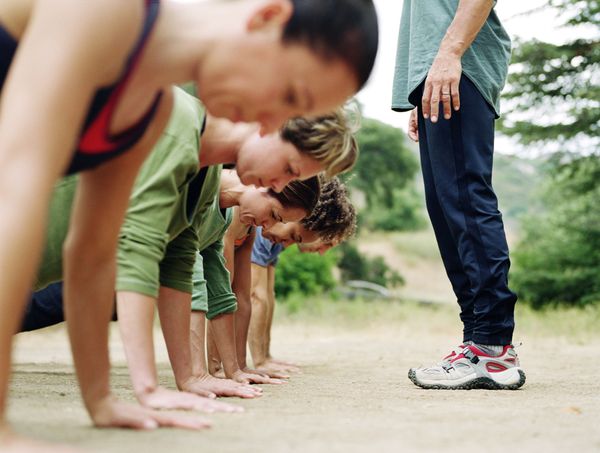In cities where bicycle transport is a structural afterthought (if considered at all), riding on the road with cars can be pretty risky. For 2010, the National Highway Traffic Safety Administration puts the number of recorded collisions between bikes and cars at 52,000, although reporting discrepancies indicate 500,000 might be more accurate [sources: NHTSA, UNC]. It's understandable, if not always legal, for a cyclist to hop off the road and onto the sidewalk to avoid that risk.
The problem is, cycling on the sidewalk is risky, too, and not just to the pedestrians who get in the way. Sidewalks aren't designed for bike travel; and because pedestrians don't expect to be mingling with cyclists, they aren't looking for them. Even when riders call out "passing on the left!" with what seems like plenty of time, they may find themselves swerving off the sidewalk to avoid a pedestrian collision -- and colliding with a tree or a car instead.
Perhaps counter-intuitively, though, the greatest cycling danger on the sidewalk is cars. Drivers, like pedestrians, aren't expecting bikes to be there. They're expecting sidewalk traffic to be moving at, say, 3 miles per hour (5 kilometers per hour). That's hardly darting speed, so when they pull out of driveways or alleys, they typically pull all the way up to the road, past the sidewalk, before stopping. A pedestrian will probably have plenty of time to stop for that car; a faster-moving cyclist probably won't.
Getting hit while crossing a driveway is probably the most common cause of sidewalk collisions, but it's not the only one. Running into a right-turning car (getting "right-hooked," in the lingo), a significant danger to cyclists on the road, is a risk on the sidewalk, too. Cars turning right at the end of a block are looking for pedestrians in the immediate vicinity of that corner, not a bike that can clear the entire block in a few seconds. A bike can appear in a car's path in the time it takes the driver to look left one last time.
Sidewalk-cycling rules that protect pedestrians, then -- like riding at walking speed and walking a bike during high-traffic times -- can also help protect cyclists. Moving onto the sidewalk doesn't remove cars from the equation; it simply moves the danger to driveways and crosswalks.
Governments regularly enact new laws to help reduce the risks associated with cycling on the road with cars, but they can only do so much. The widely held belief is that the only real solution is to take a cue from cities like Copenhagen: Re-think and revise travel infrastructures with bicycles in mind.
That's a tall order in a time when many state and local governments have to choose between education and health care to avoid bankruptcy, but some U.S. cities are getting on board. Seattle, for one, has a 10-year plan to put almost a quarter-billion dollars into expanding its bike-friendly travel network, with the end goal of making more people want to bike instead of drive [source: Bicycling].
At least in the foreseeable future, Copenhagen's 55-percent cycling rate may be a bit out of reach for much of the United States. Davis' 14 percent, however, might turn out to be a more realistic goal, a number that pales in comparison but would be a remarkable improvement: According to the League of American Bicyclists, the current national average is about 0.4 percent.
For more information on commuting by bike, bike-friendly cities and related topics, check out the links on the next page.


